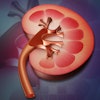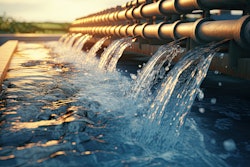The use of iodinated contrast media (ICM) for CT scans can be optimized in radiology departments to reduce its downstream environmental impact, according to a presentation delivered on September 13 at the International Society for Computed Tomography (ISCT) meeting.
In a session on sustainability in CT operations, Giuseppe Toia, MD, of the University of Wisconsin in Madison, discussed the problem and described steps departments can take to mitigate it.
"The bottom line is that we use a lot of ICM and that despite water treatment, ICM remains in our water supply, not to mention all the plastic we're accumulating as a secondary consumable," he said.
Approximately 300 million contrast-enhanced CT exams are performed worldwide each year, which require about 10 million gallons of ICM -- enough to fill four Olympics-sized swimming pools, Toia noted.
Much of this contrast media makes it into surface water and groundwater through patients' urine, yet excess amounts after procedures are also being discarded down hospital drains, he said. Wastewater treatment plants do not filter all of the ICM out, and chemical reactions with other compounds in the water (chlorine, for instance) turn it into toxic "iodinated disinfection byproducts," which are known to have adverse health effects on humans, Toia explained.
Currently, single-use syringe injector systems are the standard of practice for IV contrast delivery, he noted. Aside from contrast media, each single system comprises two plastic pistons, bottle spikes, plastic ejector tubing, and plastic packaging -- all of which are thrown out after use on a per-patient basis, Toia noted.
Conversely, newer multidose syringeless power injectors are available that obviate the need to discard contrast between patient exams. These injectors often use 500-mL multiuse plastic containers of contrast and can be used across multiple patients and examinations, he said.
In a 16-week study last year, Toia and colleagues compared the delivery approaches in two sets of 1,400 patients. They found that switching from single-use syringe-based injectors to multiuse syringeless injectors resulted in a 100% reduction in ICM waste, an 84.6% reduction in plastic waste, and a 77.6% reduction in total waste.
In addition, aside from the waste savings, the group found that the department's technologists preferred the new device and spent on average one minute less per exam, Toia said.
"Based on this work, we replaced our entire injector fleet and not have regretted the decision since," he said.
Ultimately, Toia said he is not arguing that ICM isn't an integral part of diagnostic medical imaging and that he finds it hard in fact not to consider it "the holy grail of CT imaging."
However, he suggested that switching to multidose syringeless injectors can be instrumental to achieving ICM usage optimization, decreasing consumable waste, preserving contrast, and saving technologist time.
"By prioritizing green radiology, you can contribute to a world in which our work not only improves patient care but also decreases our environmental footprint, improves CT workflow and satisfaction, and overall optimizes your scanning ecosystem," Toia concluded.




















